What is a Photoresistor?
A photoresistor, also known as a light-dependent resistor (LDR) or photocell, is a passive electronic component that changes its electrical resistance based on the intensity of light falling on its surface. It is made of a high-resistance semiconductor material, typically cadmium sulfide (CdS) or cadmium selenide (CdSe), which exhibits photoconductivity.
The working principle of a photoresistor is simple: when light falls on the semiconductor material, it absorbs photons, which excite electrons from the valence band to the conduction band. This process creates free electrons and holes, increasing the conductivity of the material and consequently decreasing its resistance. The more intense the light, the lower the resistance of the photoresistor.
Characteristics of Photoresistors
Photoresistors have several unique characteristics that make them suitable for various applications:
-
Light Sensitivity: Photoresistors are highly sensitive to light, making them ideal for detecting even small changes in light intensity.
-
Spectral Response: Different photoresistor materials have different spectral responses. CdS photoresistors are more sensitive to visible light, while CdSe photoresistors have a broader spectral response, extending into the infrared region.
-
Response Time: Photoresistors have a relatively slow response time compared to other light sensors, such as photodiodes. The response time depends on factors like the material, size, and light intensity.
-
Temperature Dependence: The resistance of a photoresistor is also affected by temperature. As the temperature increases, the resistance decreases, even in the absence of light.
-
Non-linearity: The relationship between light intensity and resistance in a photoresistor is non-linear. This means that the resistance does not change proportionally with the light intensity.
Applications of Photoresistors
1. Lighting Control Systems
One of the most common applications of photoresistors is in lighting control systems. Photoresistors can be used to automatically turn lights on and off based on the ambient light conditions. This is particularly useful for outdoor lighting, such as street lights or garden lights, which can be programmed to turn on at dusk and off at dawn.
Example: Street Light Control
| Component | Function |
|---|---|
| Photoresistor | Senses the ambient light level |
| Microcontroller | Processes the photoresistor input and controls the relay |
| Relay | Switches the street light on or off |
| Street Light | Illuminates the area when turned on |
In this example, the photoresistor continuously monitors the ambient light level. When the light level falls below a certain threshold (indicating dusk), the microcontroller triggers the relay to turn on the street light. Conversely, when the light level rises above the threshold (indicating dawn), the microcontroller turns off the street light.
2. Security Systems
Photoresistors can also be used in security systems to detect unauthorized access or intrusion. By monitoring changes in light levels, a photoresistor can trigger an alarm or send an alert when someone enters a restricted area.
Example: Intrusion Detection System
| Component | Function |
|---|---|
| Photoresistor | Detects changes in light level caused by an intruder |
| Microcontroller | Processes the photoresistor input and triggers the alarm |
| Alarm | Produces a loud sound to alert the authorities |
| GSM Module | Sends an SMS alert to the owner’s mobile phone |
In this intrusion detection system, the photoresistor is placed in a strategic location, such as near a door or window. When an intruder enters the area, the change in light level is detected by the photoresistor. The microcontroller then triggers the alarm and sends an SMS alert via the GSM module to notify the owner or authorities of the intrusion.
3. Photography and Imaging
Photoresistors find applications in photography and imaging, particularly in light meters and exposure control systems. By measuring the light intensity, a photoresistor helps determine the optimal exposure settings for a camera.
Example: Camera Exposure Control
| Component | Function |
|---|---|
| Photoresistor | Measures the light intensity of the scene |
| Microcontroller | Processes the photoresistor input and calculates the exposure settings |
| Camera | Adjusts the aperture and shutter speed based on the exposure settings |
In this camera exposure control system, the photoresistor measures the light intensity of the scene. The microcontroller then uses this information to calculate the optimal aperture and shutter speed settings for proper exposure. The camera adjusts its settings accordingly to capture a well-exposed image.
4. Automotive Applications
Photoresistors are used in various automotive applications, such as automatic headlight control and dashboard dimming. They help improve driver comfort and safety by adjusting the lighting based on the ambient light conditions.
Example: Automatic Headlight Control
| Component | Function |
|---|---|
| Photoresistor | Senses the ambient light level |
| Microcontroller | Processes the photoresistor input and controls the headlights |
| Headlights | Illuminate the road ahead when turned on |
In this automatic headlight control system, the photoresistor continuously monitors the ambient light level. When the light level falls below a certain threshold (indicating low light conditions), the microcontroller turns on the headlights. When the light level rises above the threshold (indicating sufficient daylight), the microcontroller turns off the headlights.
5. Environmental Monitoring
Photoresistors can be used in environmental monitoring applications to measure light intensity and track changes in natural lighting conditions. This information is valuable for various purposes, such as plant growth monitoring, solar energy assessment, and weather monitoring.
Example: Solar Energy Assessment
| Component | Function |
|---|---|
| Photoresistor | Measures the light intensity at the solar panel location |
| Microcontroller | Processes the photoresistor input and logs the data |
| SD Card Module | Stores the logged data for future analysis |
| Solar Panel | Converts sunlight into electrical energy |
In this solar energy assessment system, the photoresistor measures the light intensity at the location of the solar panel. The microcontroller logs this data along with a timestamp using an SD card module. The logged data can be analyzed later to determine the optimal placement and orientation of the solar panel for maximum energy production.
6. Robotics and Automation
Photoresistors are commonly used in robotics and automation applications for object detection, line following, and light-based navigation. They provide a simple and cost-effective way to sense the presence or absence of light, enabling robots to interact with their environment.
Example: Line Following Robot
| Component | Function |
|---|---|
| Photoresistors | Detect the presence of a dark line on a light surface |
| Microcontroller | Processes the photoresistor inputs and controls the motors |
| Motors | Drive the robot’s wheels for movement |
In this line following robot, an array of photoresistors is mounted on the bottom of the robot, facing the ground. The photoresistors detect the contrast between the dark line and the light surface. The microcontroller processes the photoresistor inputs and adjusts the motor speeds to keep the robot centered on the line, enabling it to follow the path autonomously.
7. Interactive Displays and Exhibits
Photoresistors can be used to create interactive displays and exhibits in museums, art installations, and educational settings. By detecting the presence or movement of visitors, photoresistors can trigger audio, visual, or mechanical responses, enhancing the user experience.
Example: Interactive Art Installation
| Component | Function |
|---|---|
| Photoresistors | Detect the presence and movement of visitors |
| Microcontroller | Processes the photoresistor inputs and controls the LEDs and speakers |
| LEDs | Provide visual feedback and create dynamic lighting effects |
| Speakers | Produce audio responses based on visitor interaction |
In this interactive art installation, photoresistors are placed throughout the exhibit space. When a visitor approaches or interacts with a specific area, the photoresistors detect their presence. The microcontroller then triggers corresponding LED lighting effects and audio responses, creating an immersive and engaging experience.
8. Agricultural Monitoring
Photoresistors can be used in agricultural monitoring applications to measure light levels in greenhouses, optimize plant growth conditions, and control irrigation systems based on sunlight availability.
Example: Greenhouse Monitoring System
| Component | Function |
|---|---|
| Photoresistors | Measure light levels at different points in the greenhouse |
| Microcontroller | Processes the photoresistor inputs and controls the actuators |
| Actuators | Adjust ventilation, shading, and irrigation based on light levels |
| Sensors | Monitor other environmental factors like temperature and humidity |
In this greenhouse monitoring system, photoresistors are placed at various locations to measure the light levels. The microcontroller processes this data along with inputs from other sensors (e.g., temperature and humidity) to optimize the growing conditions. It controls actuators to adjust ventilation, shading, and irrigation based on the light levels and other environmental factors, ensuring optimal plant growth and health.
9. Remote Sensing
Photoresistors can be used in remote sensing applications, such as weather balloons or satellite systems, to measure light intensity at high altitudes or in space. This data is valuable for studying atmospheric conditions, monitoring climate change, and observing astronomical phenomena.
Example: Weather Balloon Payload
| Component | Function |
|---|---|
| Photoresistor | Measures light intensity at high altitudes |
| Microcontroller | Processes the photoresistor input and logs the data |
| Radio Transmitter | Sends the logged data to a ground station |
| Battery | Powers the payload electronics |
In this weather balloon payload, a photoresistor is included to measure the light intensity at various altitudes as the balloon ascends. The microcontroller logs the photoresistor data along with other sensor readings (e.g., temperature, pressure, humidity) and transmits the data to a ground station using a radio transmitter. This information contributes to the study of atmospheric conditions and weather patterns.
10. DIY and Hobby Projects
Photoresistors are popular in DIY and hobby projects due to their simplicity and versatility. They can be used to create light-sensitive circuits, automate tasks based on light levels, or add interactivity to personal projects.
Example: Automatic Night Light
| Component | Function |
|---|---|
| Photoresistor | Senses the ambient light level |
| Microcontroller | Processes the photoresistor input and controls the LED |
| LED | Provides illumination when the ambient light level is low |
| Battery | Powers the night light circuit |
In this automatic night light project, a photoresistor senses the ambient light level. When the light level falls below a certain threshold (indicating darkness), the microcontroller turns on the LED to provide illumination. When the light level rises above the threshold (indicating sufficient light), the microcontroller turns off the LED to conserve power. This simple project demonstrates how photoresistors can be used to create practical and energy-efficient solutions.

FAQ
-
Q: How do I choose the right photoresistor for my application?
A: When choosing a photoresistor, consider factors such as the spectral response (sensitivity to specific wavelengths), resistance range, response time, and physical size. Determine the light levels you need to detect and select a photoresistor that matches your requirements. -
Q: Can I use a photoresistor for precise light measurements?
A: Photoresistors are not ideal for precise light measurements due to their non-linear response and temperature dependence. For accurate light measurements, consider using a photodiode or a dedicated light sensor with a linear output. -
Q: How do I interface a photoresistor with a microcontroller?
A: To interface a photoresistor with a microcontroller, you typically use a voltage divider circuit. Connect the photoresistor in series with a fixed resistor, and connect the midpoint of the voltage divider to an analog input pin of the microcontroller. The microcontroller can then read the voltage across the photoresistor to determine the light intensity. -
Q: What is the difference between a photoresistor and a photodiode?
A: While both photoresistors and photodiodes are light-sensitive devices, they have some key differences. Photoresistors change their resistance based on light intensity, whereas photodiodes generate a current proportional to the light intensity. Photodiodes have a faster response time and a more linear output compared to photoresistors. -
Q: Can I use a photoresistor for detecting specific colors?
A: Photoresistors are not designed for color detection, as they have a broad spectral response. If you need to detect specific colors, consider using color sensors or combining a photoresistor with color filters to isolate specific wavelengths of light.
Conclusion
Photoresistors are versatile and cost-effective components that find applications in a wide range of fields, from lighting control and security systems to photography, automotive, environmental monitoring, robotics, interactive displays, agricultural monitoring, remote sensing, and DIY projects. Their ability to detect changes in light intensity makes them invaluable for automating processes, enhancing user experiences, and gathering important data.
When selecting a photoresistor for your application, consider factors such as the light levels you need to detect, the required response time, and the operating environment. By understanding the characteristics and limitations of photoresistors, you can effectively integrate them into your projects and harness the power of light sensing.
As technology advances, photoresistors continue to play a crucial role in enabling innovative solutions and improving our daily lives. Whether you are a hobbyist, engineer, or researcher, exploring the potential of photoresistors can open up new possibilities and inspire creative applications in your field of interest.
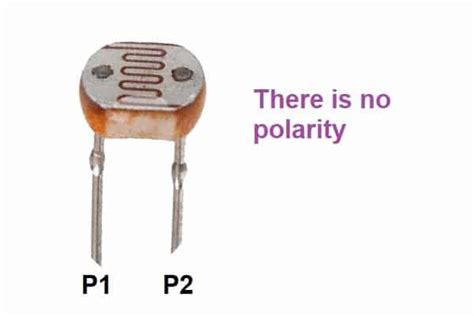
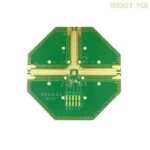
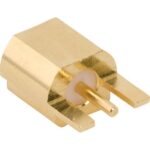
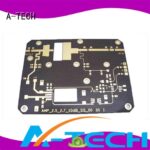
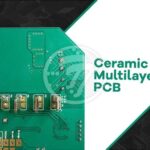
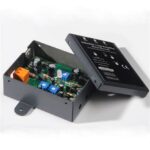
Leave a Reply